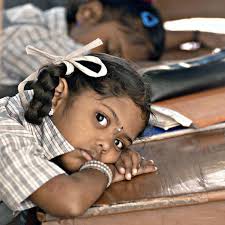Preface
The Right to Education Act, 2009 (RTE Act) is a landmark in shaping India’s educational landscape, particularly for marginalized and rural communities. By mandating free and compulsory education for children aged 6–14 years, the Act seeks to break down long-standing barriers to educational access, ensuring equity, social justice, and sustained development across rural India. It is not merely a welfare measure but a transformative tool for nation-building.
Socio-Legal Foundation and Purpose
Enacted under Article 21A of the Constitution through the Eighty-Sixth Amendment, 2002, the RTE Act converts the right to education from a directive principle into a justiciable fundamental right. Section 3 guarantees every child the right to free and compulsory education from Class I to VIII, regardless of financial status, caste, religion, or gender. By embedding standards for infrastructure, teacher–student ratios, and prohibiting discrimination, the Act becomes a strong socio-legal framework for empowering rural and underprivileged populations.
Key Legal Provisions
- Article 21A – Provides free and compulsory education to children aged 6–14 in a manner determined by the State.
- Section 3 – Guarantees the right to elementary education from Class I to VIII for all children.
- Minimum Quality Standards – Mandates benchmarks for school infrastructure, recruitment of qualified teachers, curriculum, and continuous monitoring with possible withdrawal of recognition for non-compliance.
- Admission and Non-Discrimination – Prohibits denial of admission based on economic status, caste, or other grounds; private schools must reserve 25% of seats for children from disadvantaged groups, with state reimbursement.
- School Management Committees (SMCs) – Comprising 75% parents or guardians, ensuring community participation and decentralized governance.
Judicial Compliance and Expansion
The judiciary has played a pivotal role in strengthening the scope of the right:
- Devesh Sharma v. Union of India – The Supreme Court held that the right to education under Article 21A includes access to quality education, not just formal enrollment. Dilution of quality violates constitutional and statutory mandates.
- Mohini Jain v. State of Karnataka (1992) – The Court struck down the imposition of capitation fees by private colleges, observing that education cannot be reduced to commercial exploitation. This case laid the constitutional foundation that culminated in the enactment of the RTE Act.
Socio-Legal Impact on Rural Education
The implementation of the RTE Act has brought notable changes in rural India:
- Increased school enrollment among marginalized groups including Scheduled Castes, Scheduled Tribes, and minority communities.
- Narrowing gender gaps in primary education, as communities increasingly recognize education as a right rather than a privilege.
- Strengthened inclusivity through non-discrimination mandates, 25% reservation in private institutions, and active involvement of parents in school governance.
However, persistent challenges continue to limit the effectiveness of RTE in rural areas:
- Inadequate infrastructure, including lack of classrooms, safe drinking water, and sanitation facilities.
- Shortage of trained teachers and limited opportunities for continuous professional development.
- Weak implementation of School Management Committees due to low literacy levels among parents in rural communities.
- High dropout rates driven by socio-economic pressures such as child labor, migration, and poverty.[1]
Conclusion
The Right to Education Act, 2009, signifies a transformative step in India’s pursuit of equity, social justice, and inclusive development through education. Its greatest impact has been in rural areas, where it has helped dismantle barriers of exclusion and empowered marginalized groups. Yet, for the statutory promise to translate into lived realities, systemic reforms are critical. Strengthening infrastructure, enhancing teacher training, empowering local governance, and ensuring greater investments in rural schools will be essential to fulfill the constitutional vision of universal, quality education.
[1] https://www.researchgate.net/publication/388166646_THE_ROLE_OF_THE_RIGHT_TO_EDUCATION_ACT_2009_IN_EMPOWERING_MARGINALIZED_COMMUNITIES_IN_RURAL_INDIA_A_REGIONAL_ANALYSIS

